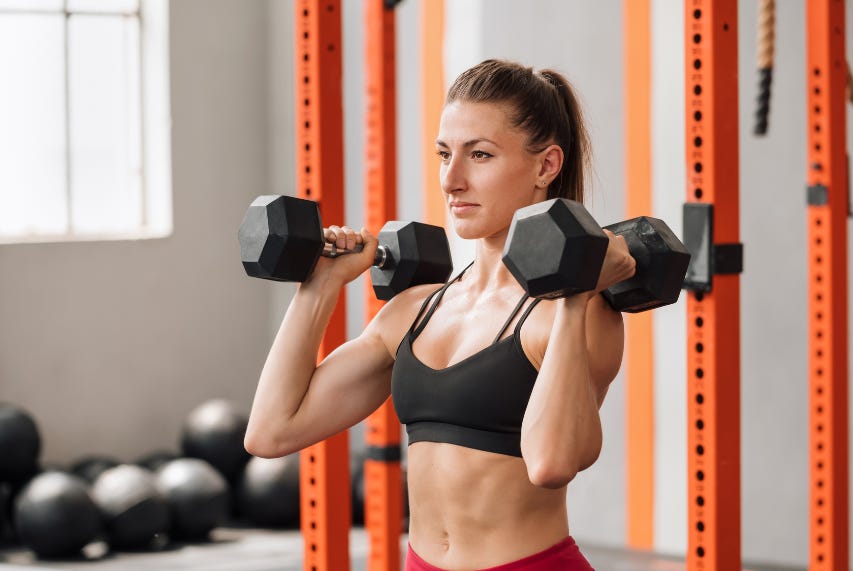We have been talking a lot about the benefits of asymmetric training for preventing injury and overt physical imbalances, and for improvement in overall physical function.
This week, we are building on this theme with a workout that targets “pushing” and “pulling” movements, which achieves functional balance of the directions our body applies force as compared to training asymmetries of the right and left sides of the body. Push/Pull training balances the body’s ability to move load in opposing directions: pulling weight toward you and pushing weight away.
You can imagine scenarios where imbalances can surface. Let’s talk about sit-ups and crunches. When we think about our “core” or our “abs”, these are the exercises that come to mind. They involve flexion of the spine. But what about the Superman hold that targets the extension of the spine? I would bet we do far more sit-ups during our training than we do Superman holds or other exercises that train the extensors of the spine.
Another example is the biceps curl or bent-over row that involves flexion of the arm at the elbow. We see these two movements a lot in all types of training programs. But what about box dips? Or triceps extensions? These movements target extension of the arm at the elbow - the exact opposite movement pattern of curls and rows. Again, it is likely that we perform far more flexion of the arms during training than extension.
Why do we care?
Preserve and build muscle mass and functional symmetry - As we age, muscle mass, strength, and power decline. Training opposing muscle groups, ensures that the ability to push and pull effectively is not compromised by imbalances in muscle function.
Improved bone health - Applying load to our bones in different directions is more favorable for stimulating bone mineral deposition compared to load applied in just one direction.
Functional strength and posture - As we age, posture tends to shift: shoulders slump, back weakens, and postural imbalances accumulate. Training with pushing and pulling movements maintains balance between our back and front bodies, helping to maintain posture and perform everyday activities for decades to come.
Promotes recovery and injury prevention - Push/pull training helps prevent over-development of one muscle group over the other, which can lead to postural imbalances, stress on the joints, and other dysfunctional movements.
Today’s workout is a modification of 251024 from the CrossFit archives. This sequence effectively targets 2 classic push and pull movements with a plyometric bonus for your bones. As always, there are modifications for every fitness level or limitation. Enjoy!
Warm Up
TABATA (8-minute) 20 seconds of work, 10 seconds of rest. You will perform each set of 2 movements for 4 times.
TIP! If you have Spotify, search “Tabata” and you will find some fun playlists for 8 rounds of 20 work / 10 rest intervals.
Air squats (Perform for 20 seconds, then rest for 10 seconds)… then…
Easy push-up option (Perform for 20 seconds, then rest for 10 seconds…then back to the air squats)
Once you finish the TABATA, perform 15 weighted Good Mornings
Movement Practice
Each round is ideally performed unbroken or in 2 sets with a quick breath or two of rest in between. The weight for the kettlebell high pull is light to moderate. If this movement isn’t accessible to you, try 12 calories on a stationary rower or a moderate weighted bent-over dumbbell or barbell row.
For the push press, select a moderate weight that can be done in 1-2 sets. Same rules apply if you prefer to do push-ups.
Lastly, choose single under or double under options if you have a jump rope. If not, jumping jacks suffice. For a little more intensity, try the lateral jump (or step) over a dumbbell.
Workout
AMRAP 15 minutes (As many rounds as possible for 15 minutes). Perform each movement in sequence for as many rounds of the 3 movements as possible in 15 minutes.
12 kettlebell sumo deadlift high pulls
Alternatives: 12 calorie row or barbell/dumbbell bent-over row)
10 dumbbell (or barbell) push press
Alternative: Challenging push-ups (strict or elevated on a stable box or step)
60 single under jump rope (or 30 double-unders)
Alternatives: 30 jumping jacks or 10 lateral jump (or step) over a dumbbell
SCORE: Number of rounds and repetitions performed in 15 minutes.
Cool Down
Jumpstart your recovery with a little love for those hard-working shoulders with this 20-minute Neck and Shoulder Tension Release sequence from Five Parks Yoga. #dontskiptheyoga
A Hot Topic that Keeps Heating Up…..
When women come to see me struggling with performance in perimenopause and menopause, they are often concerned about their fluctuating or absent reproductive hormones and the chaos this creates.
But often it is not the reproductive hormone pathways that are creating the chaos - it’s the hormone pathways of the stress response system. Check out this podcast appearance with the awesome and amazing Selene Yeager, where we discuss how fueling and recovering are your best defense against a stress response system gone rogue!
NOW TAKING NEW CLIENTS!
If you are an active woman or competitive midlife athlete who feels abandoned by mainstream medicine, I’m here for you!
It is with great excitement that after more than 2 years of preparation, I have FINALLY launched my Telehealth Consultation Medical practice focusing on the Reproductive Endocrine needs and Menopausal Care for active, athletic, and high-performing women.
Active and athletic midlife women have needs and risk profiles that are different from the general population. These needs often go unmet by the mainstream medical community due to a lack of understanding of fitness and sport and their impact on mid-life hormonal physiology or even a lack of acknowledgment that this dynamic exists. We put your health, fitness, and performance at the center of the equation so that you can achieve your healthiest, highest-performing self!
You will find all my service offerings on my website including a link to my calendar so that you can reserve your place in my schedule!




